-
Posts
2,660 -
Joined
-
Last visited
Content Type
Profiles
Forums
Blogs
Gallery
Events
Store
Posts posted by hunyadi
-
-
David - the history of the Hungarian uniforms from 1945-1957 is absolutely fascinating and absurd at the same time. After the war the M1945 was an exact copy of the Horhty era Offciers Air Force tunic, in fact many in 1945 were simply left overs from the warehouse, still more were modified. In 1948 the Hungarian Republic entered into a pact with the Soviet Union to supply and train the Hungarian army. The M49 was the attempt to move back to a tunic that could be practical in actual combat and one that they already had desings for, but also one that did not resemble too closely the wartime tunics. Hence the use of a Soviet looking collar tab devices. In 1951 a new tunic was introduced which was a near exact copy of the Soviet Kitel tunic. Then in 1952 the Air Force got a new double breasted (agian Soviet design) tunic, this was also adopted later in 1954 by the Panzer units. What resulted was a massive strain on the garmet industry as the Hungarian economy was in peril anyhow during these years and the Quartermates kept coming up with new shoulder boards and tunics about every 3-4 years.
Also - not currently living in the USA - working in Budapest right now.
0 -
SSG Lorenzo -
THANK YOU! WELCOME HOME!
0 -
#1069 - been through a little trouble.....
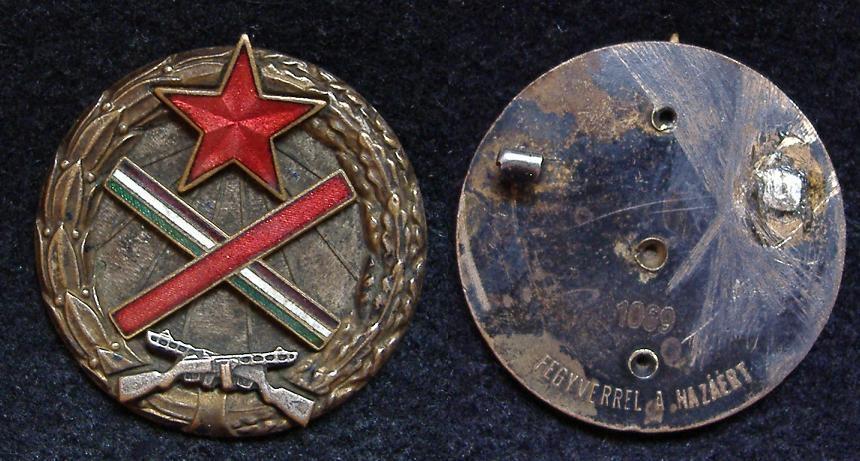
 0
0 -
Reverse - I have noticed that the 1500-2000 numbers seem to have only a bronze finish to them, no silver remains. Prehaps there was a production error...
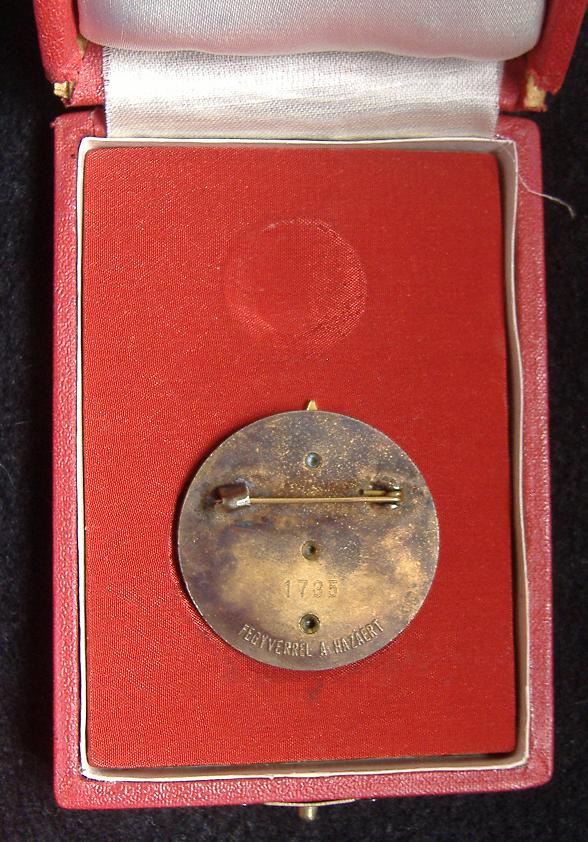
 0
0 -
#1735 in a case...
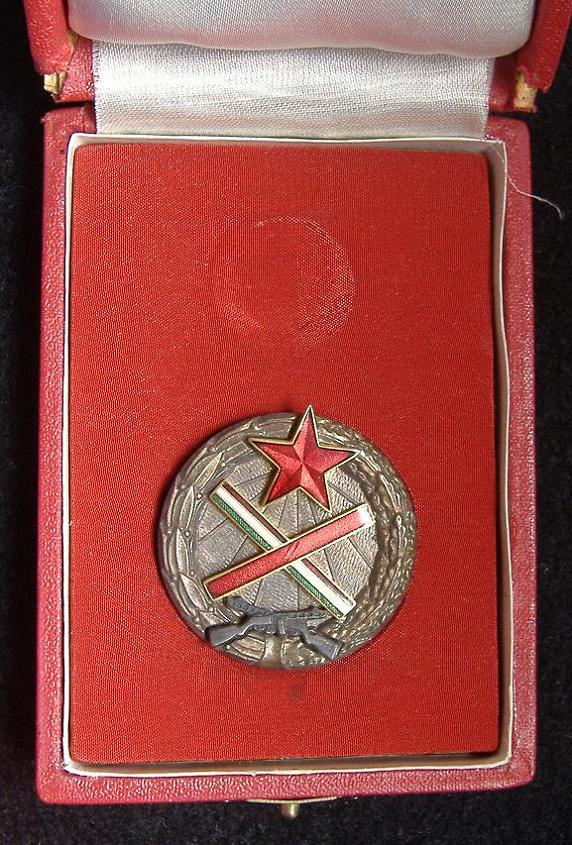
 0
0 -
Why just have the silver class when you find the Gold!!!!
I wish I could find more on these, but so far no regulations that I have found...
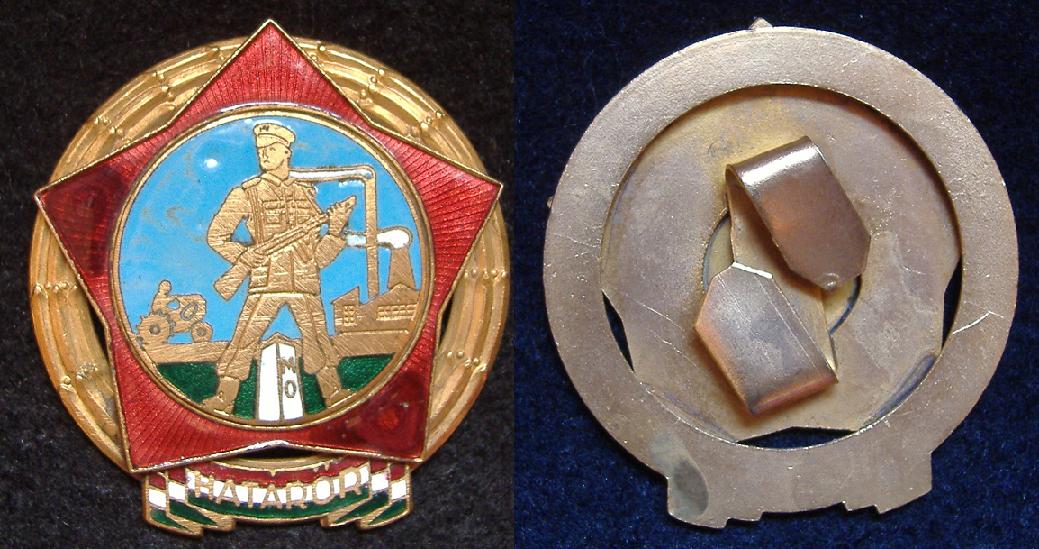
 0
0 -
detail - notice the extra work on the pockets below the buttons.
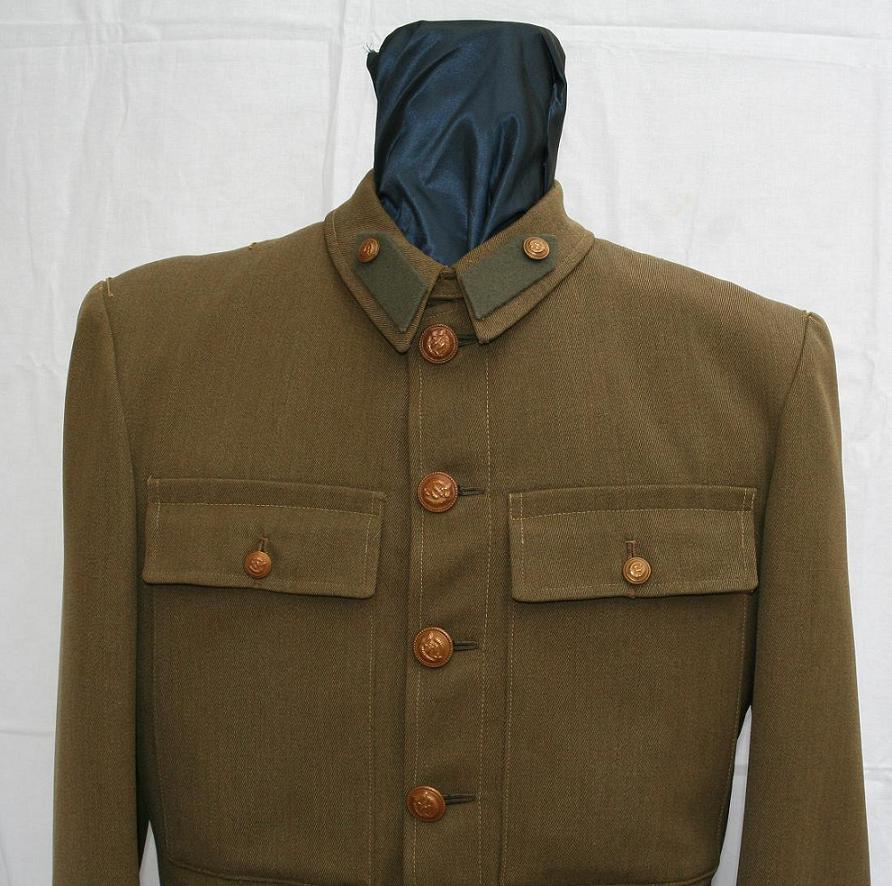
 0
0 -
In the rapid changes of tunics during the post war era in Hungary a new type of tunic was instroduced in April of 1949 just four months beofre the Hungairan Peoples Republic was formed. The new form was the 'M49' and replaced the 'M1945' tunic. The new M49 was desinged after the WW2 era Air Force tunic for NCO's and Other Ranks, commonly known as the 'mixed' tunic introduced in 1930. (mixed used a flat sew on pocket like the Air Force officer's tunic and the closed collar like the Army types) The M49 was used until the M1951 was introduced, though photogrpahic evidence shows that they were worn into at least 1952.
What maked this one of the most interesting of all my tunics is the history behind this particular tunic. First of all it still retains the buttons used from 1945-1949 on the cuffs, commonly known as the 'Tildy' era after the President of the Hungarian Republic. Per the September regulations, the buttons on the front and the pocket were changed to the 'Rakosi' HUPR buttons.
Also the branch of serivce is unique and rare. This belongs to a member of the Military Criminal Section, or a member of the Military courts that saw the show trials of thousands of offciers and generals where over a hundred were executed and thouhsands imprisoned.
Alos of interest is somethign I learned about these M49's on a trip to the MIltiary Museum to talk with the curator of uniforms.
What I learned is this is for all intents and purposes a standard M1949 tunic - but it began life during WW2!!!! The details to the interior struck me as having many elements of the Horhty era tunics. This tunic was originally a Army type, closed collar probably manufactured in 1944 or 1945. In 1945 there was a provision made to use old tunics that were modified from old wartime tunics. The scaloped pockets were cut flat and the M1945 sew in shoulder boards were to be used. This has the modified flaps which are exactly in corelation to scaloped flaps being cut down to a strait edge. You can see how the button hole has extra sewing on it - this is to connect the region where the old button hole was for the scaloped flaps! Also - this tunic has sewing on the seam of the arm and chest portion which suggests that sew in boards were once used.
Additionally the shoulder board loops are modified to accept the M1951 type shoulder board.
So in all this suggests that the tunic was made late in the war and then modified and used into the early 1950's by a man who probably had some hand in the military purges of 1949-1953.
Now - if I can only find the gray colored shoulder boards....to make it complete once again.

 0
0 -
-
Here is another tunic I picked up recently. Whats nice about it is that it started life as an M1957 tunic, but in 1963 (or there abouts) it was converted to the new regulations. The green infantry piping around the collar was removed (though there is a small fragment stuck in the right lapel to confirm it was green!) and newer style shoulder boards were used. Prior ot 1963 the shoulder boards were colored in the color of the serivce branch, however after 1963 they all changed to a greenish brown color except for police, border guard and the Karhatalom (but these were all branches with the Interior Ministry)

 0
0 -
-
During a weekend prowl at the 'Thievs Market' I cam across this little gem sitting atop the roof of a car. Instantly I recognised it as a M1957 parade tunic as it has piping along the ege of the collar and the patina on the gold bullion braid on the shoulder boards (only the early shoulder boards from the late 1950's do this - the 1963 versions seem to have 'stay brite' in them). But I was a little confised as it was a military type tunic with police type insignia. I bought it anyhow and talked to the post Rakosi tunic expert who instnatly identified it as a Karhatalom tunic. Just after the 1956 Revolution, the new premier Janos Kadar raised the 'Kadar's Hussars', a unit loyal to him that was designed ot keep the peace and maintian military order. They dressed in Soviet padded jackets and pants and went around letting everyone know who was now in charge. The ranks were filled with loyal communist army, police and quite a few unemployed State Security (AVH) personel. Kadar had disbanded the AVH as he himslef had fell victim to their brutality in 1951. As the old AVH had an armed unit that was fundamentaly trianed to fight any form of 'counter-revolution', Kadar maintained this type of force with the Karhatalom from 1957 to the very early 1970's. There was about 20,000 members of the Karhatalom and they even had conscription rights.
This particular tunic has loops for the 'Excelent Karhatalom Service' badge and has marks where two other badges were (perhaps an academy badge and anohter pin on device) The medal bar is absolutely beautiful; Retun of Power to the Workers-Peasants medal (for participation in fighitng aginast the 1956 revolution) Merit Medal of the HUPR in Gold, Distinguished Serivce Medal, Serivce Medal, and the Karhatalom Serivce Medal in Bronze (for 5 years of service)
The rank is for a Lt. Col.

 0
0 -
Order of Merit of the Hungarian Republic, 1946
As the Order of Merit of Hungarian Freedom was the first award created by the newly founded Hungarian Republic, the parliament made further intentions of creating a new order. It was determined that because the Republic had been successfully formed a new order was intended to ?show appreciation to those Hungarians and foreigners who worked to build and strengthen the Republic?. On September 14th, 1946 both the Order of Merit of the Hungarian Republic and the Merit Medal of the Hungarian Republic was instituted.
The Order of Merit was designed in five grades; the Grand Cross, Commanders Cross with Breast Star, Commanders Cross, Officers Cross and the Small Cross. In order to save on time and effort the Order of Merit utilized the same dies as the Horthy era Hungarian Order of Merit (instituted in 1922). The only modifications that were undertaken was the use of a tricolor shield in place of the Greek cross, nearly everything else remained the same.
Conversely the Merit Medal was broken down into three classes of gold, silver and bronze. Similarly to its counterpart, the Merit Medal was designed after the Hungarian Cross of Merit, (though they did not employ the wartime die) with the replacement of the Greek cross and the addition of a laurel wreath between the arms of the cross.
Both the Order of Merit and the Merit Medal were intended to be awarded in both a military grade and a civilian grade. The factor that would determine a military grade from the civilian would be the employment of two different types of ribbon. Both the military and the civilian ribbons were to be a bright red color. The military ribbon was to have a single, 7mm wide band of the national colors flanked by two small bands of white that ran in the center of the ribbon. The civilian ribbon was to have two 5mm bands, placed 8mm from each edge of the ribbon, in the national colors edged by two bands of white. Though the system was formed and ribbons of both grades were apparently produced, official records only denote the civilian grade of the Order of Merit and the Merit Medal ever being bestowed.
As each of the various grades used the old wartime dies the crosses all retained similar features. Each cross used for the Order of Merit was formed with a fire gilded silver base. The arms of the cross were finished in fire enameled white with typically a 1mm wide deep red enameled perimeter. The center of each cross on the obverse displayed a medallion with an enameled shield of the national colors. The shield was placed on a deep red enamel disc which was then encompassed by a green enameled wreath. For all grades save the Officer Cross, the arms on the reverse of the cross were also finished in fire enameled white with the red enamel border. However, the central medallion on the reveres was a plain fire gilded disk with the date 1946 stamped into it.
Shown above is the Commanders Cross
very nice - can I get a scan for my book??? PM me.
0 -
-
Just recently purchased as I found one at the local military museum in the display cabinet for the 1968 Prauge uprising. It was nice to get it with the box and the award document. I am going to guess that this is to a Polish individual.
Anyonw got any information on this: IE - when it was founded, criteria, how many awarded, etc....????

 0
0 -
WOW! What a fantasic tale to go with the Order. Thanks Rick!
 0
0 -
-
Now it gets interesting??? I cant read Russain anymore, but I can read Me-109....

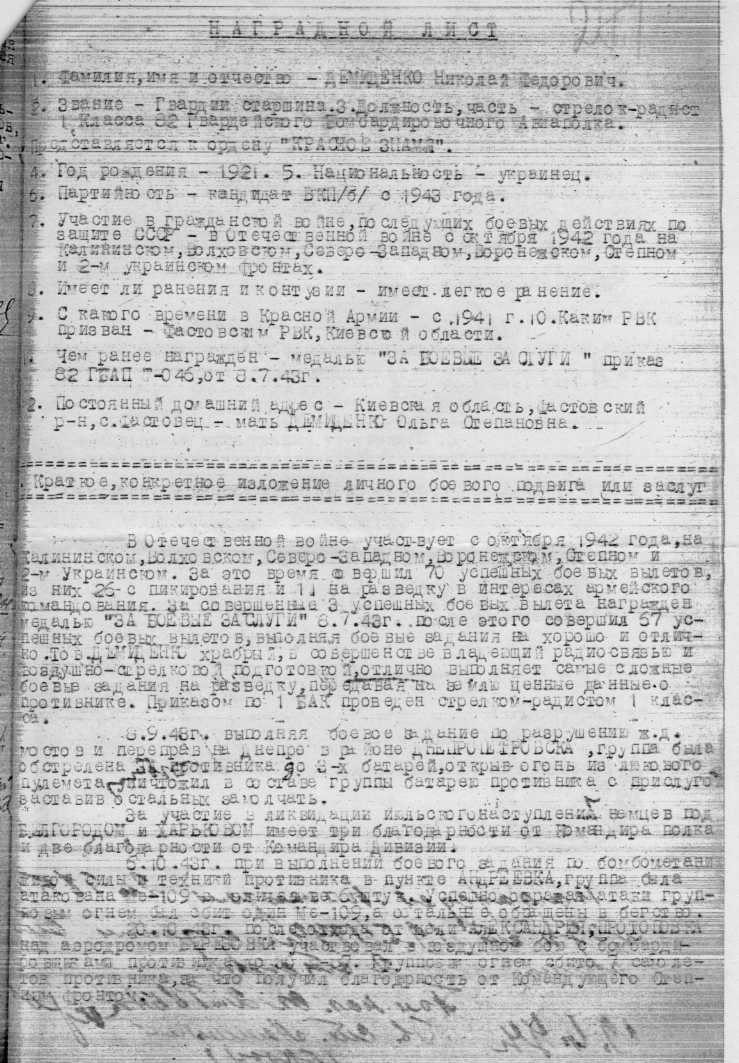
 0
0 -
-
Got the reasearch for this one - the lowest known number for the offset center OPWII cl....
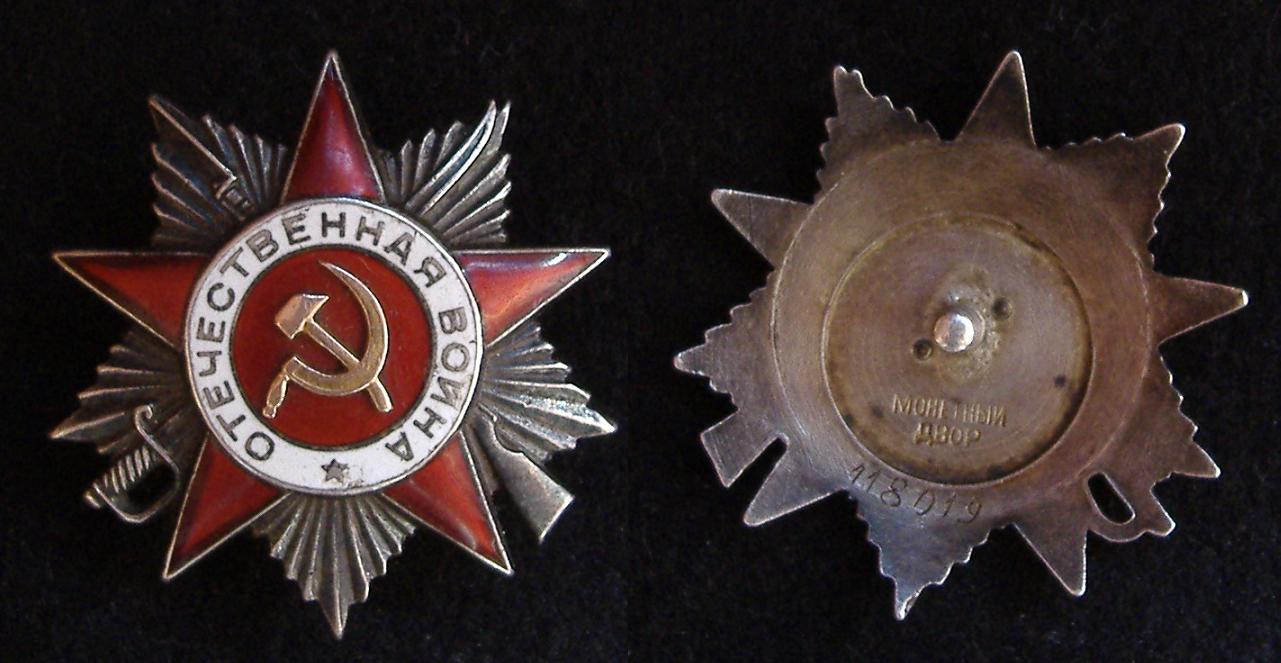
 0
0 -
-
reverse of page 2;

 0
0 -
First page;
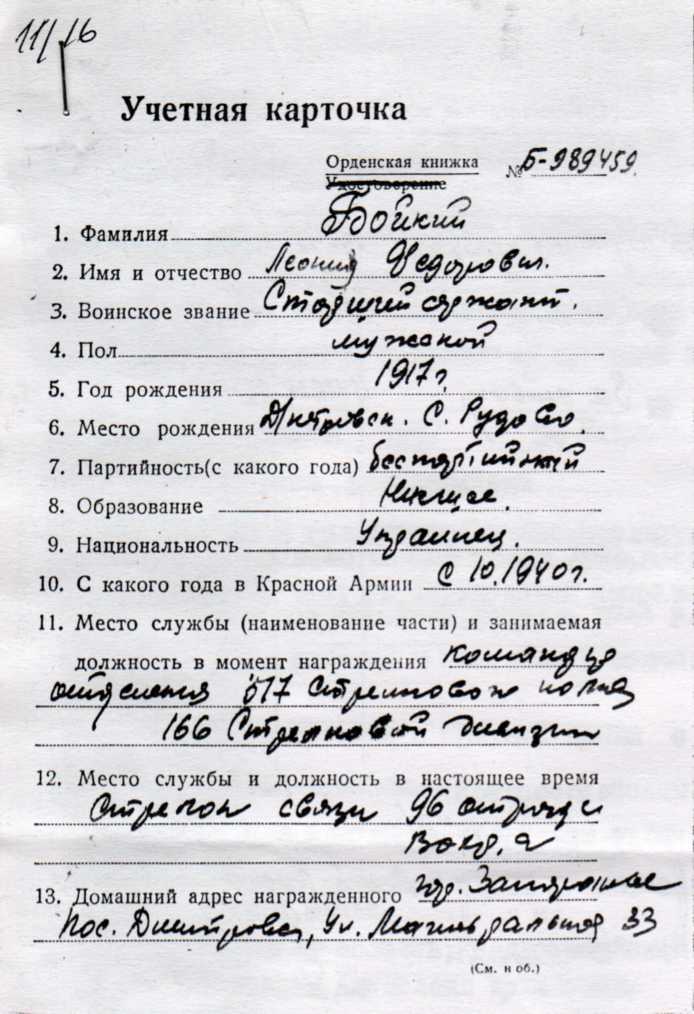
 0
0 -
Finally got the research in - any help with what this all means????
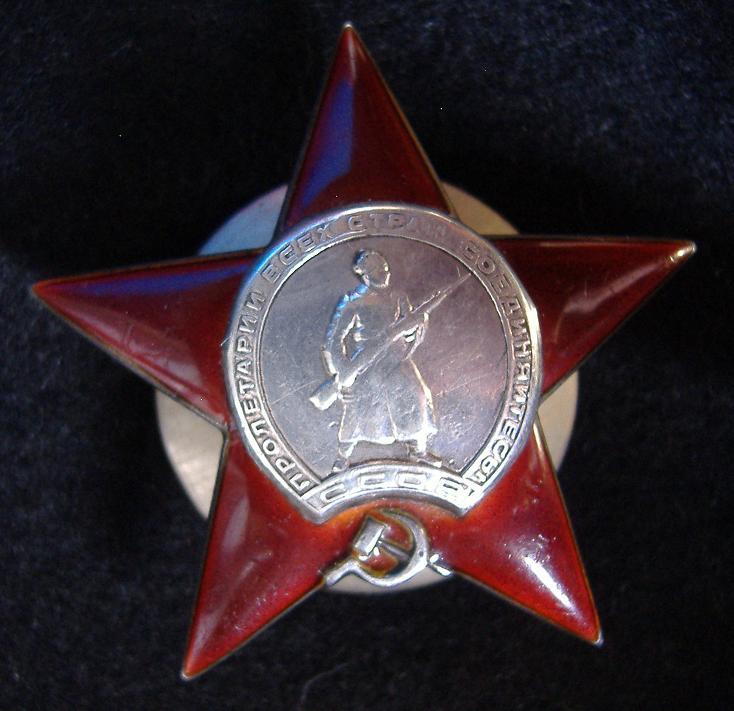
 0
0




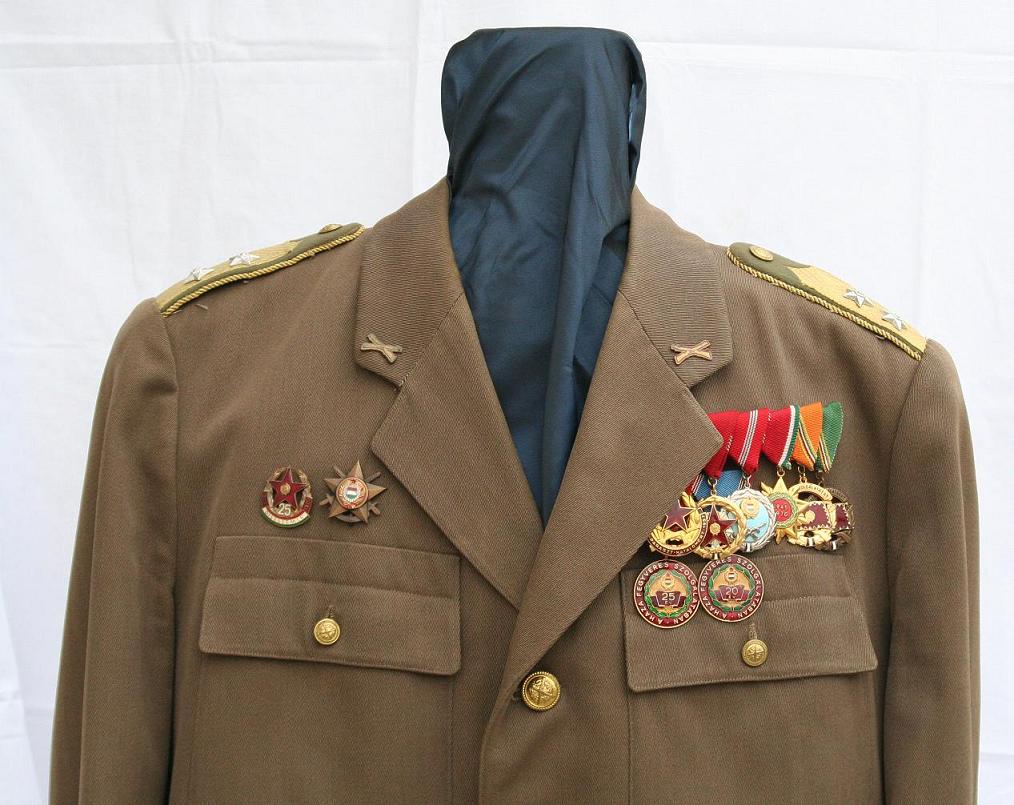
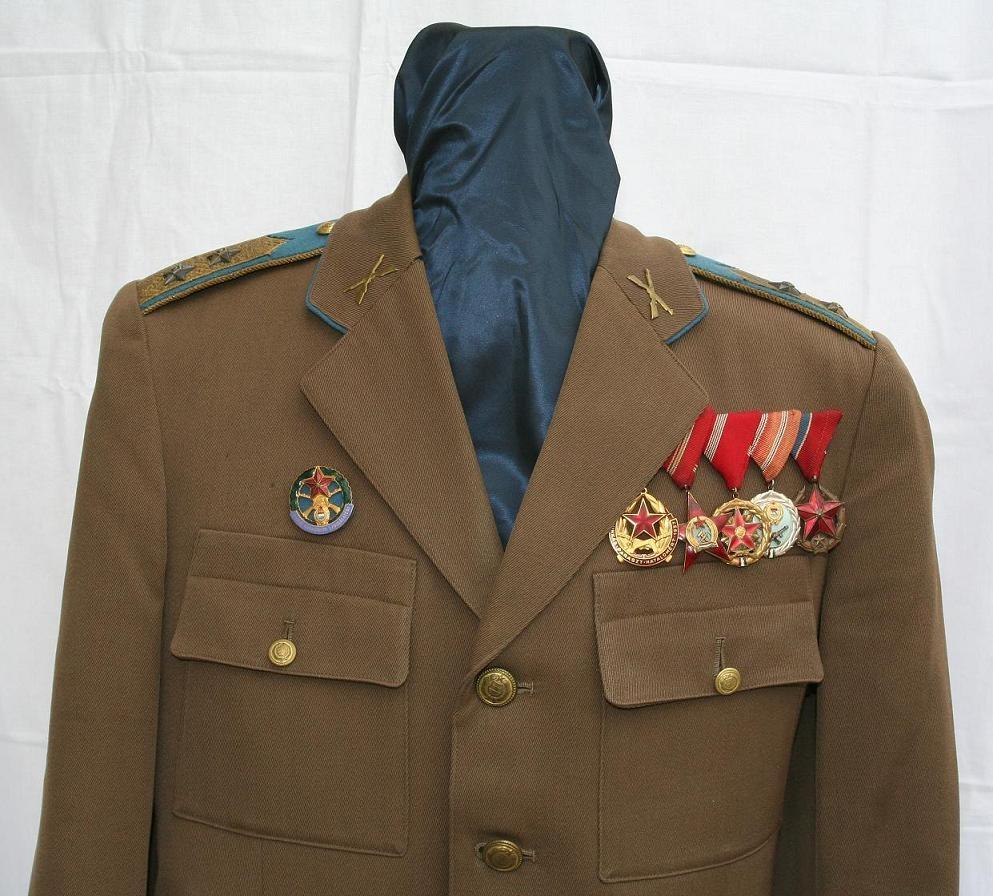
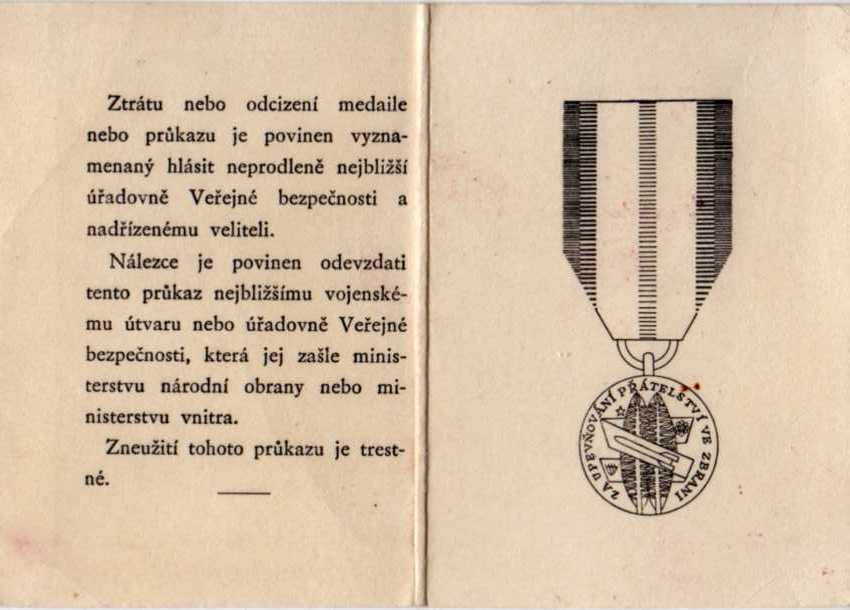
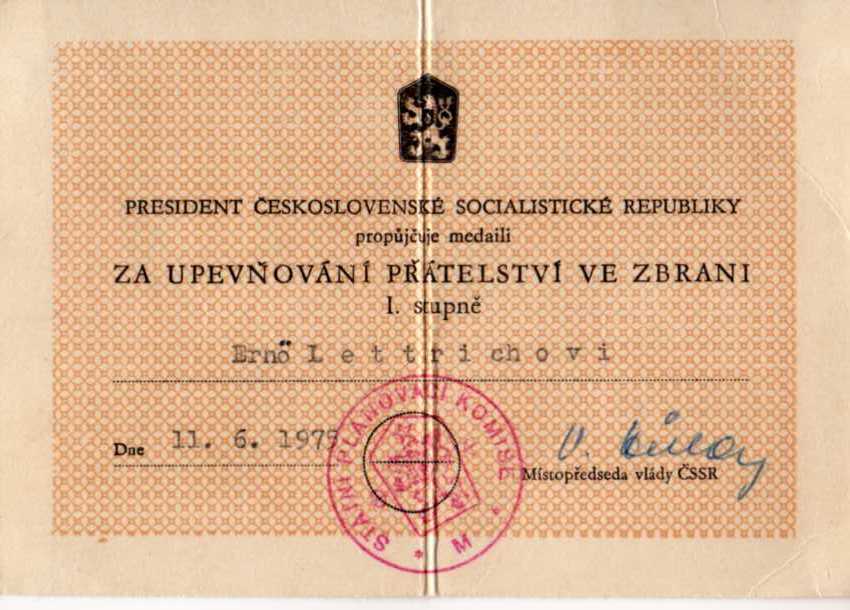
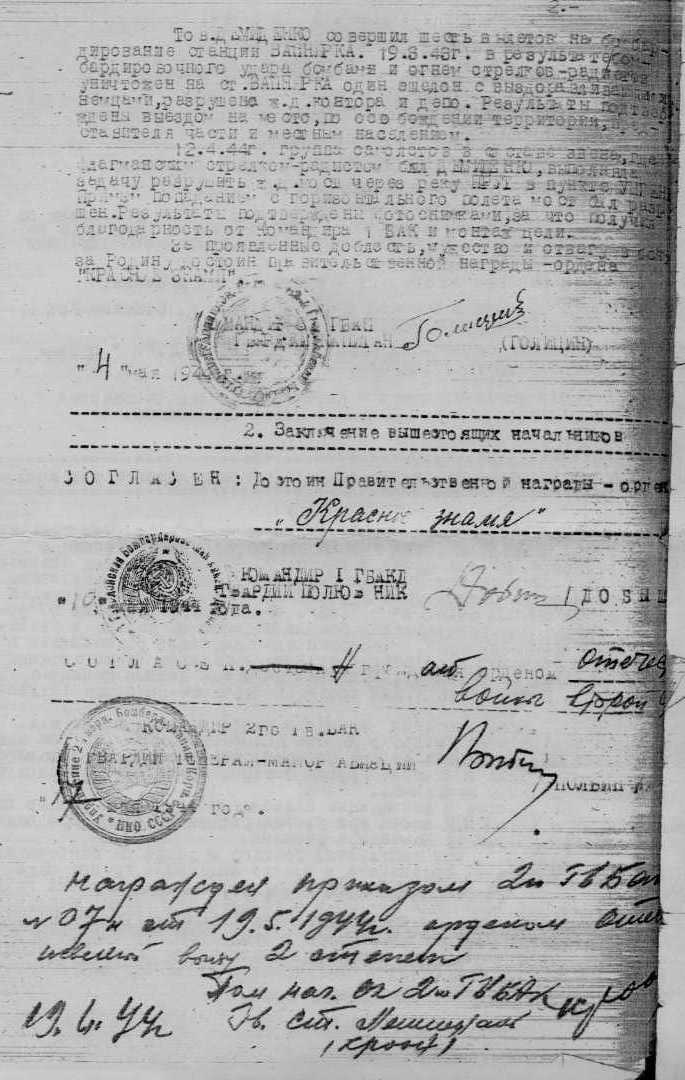

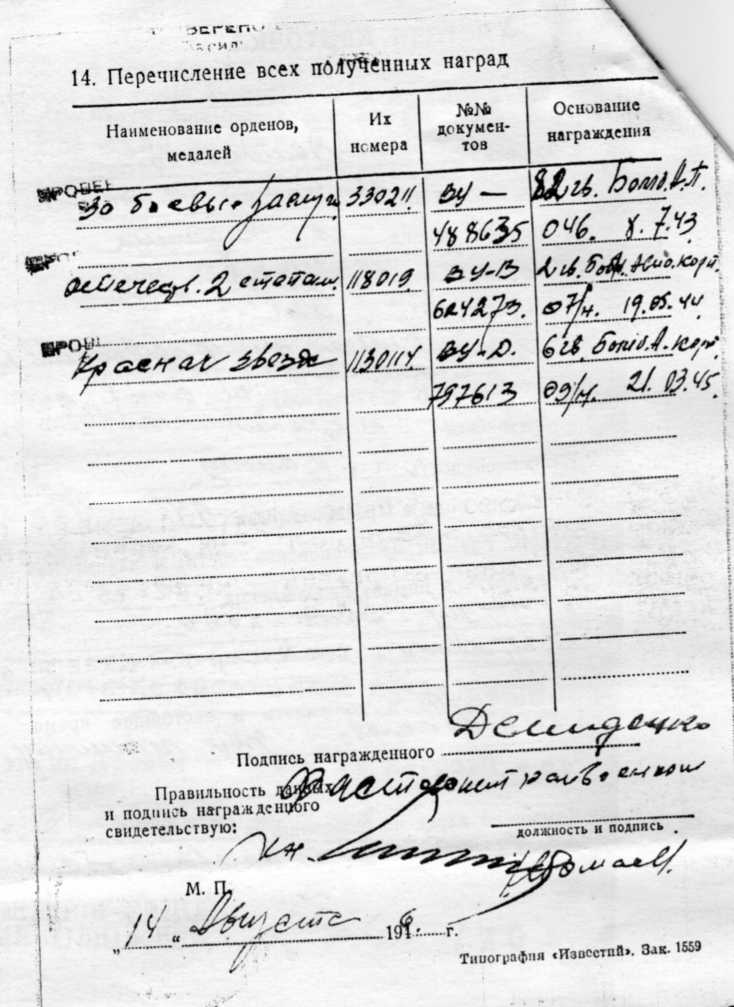

Karhatalom! M1957 Tunic
in Central & Eastern European States
Posted
Gordon -
From what Sandor M informed me and what I was able to find on the Hungarian Wikipedia, the Kadar Hussars molded into the Karhatalom.
This is a M57 tunic with the M57 boards for parade use. Hence it has the bar on it and not the ribbon bar. The interior of the tunic shows many preforations to the liner where this bar was taken on and off quite a few times in the past. Wish it had come with the other items on the other side! This tunic also has the white silk lining to the arms, typical of the M57's.
Sandor M informed me that the M63/65 tunics for the Karhatalom had the typical brown/green boards as standard army, but they used the Kadar crest buttons. Combat jackets also had the patch 'KH' instead of 'MH' on them.